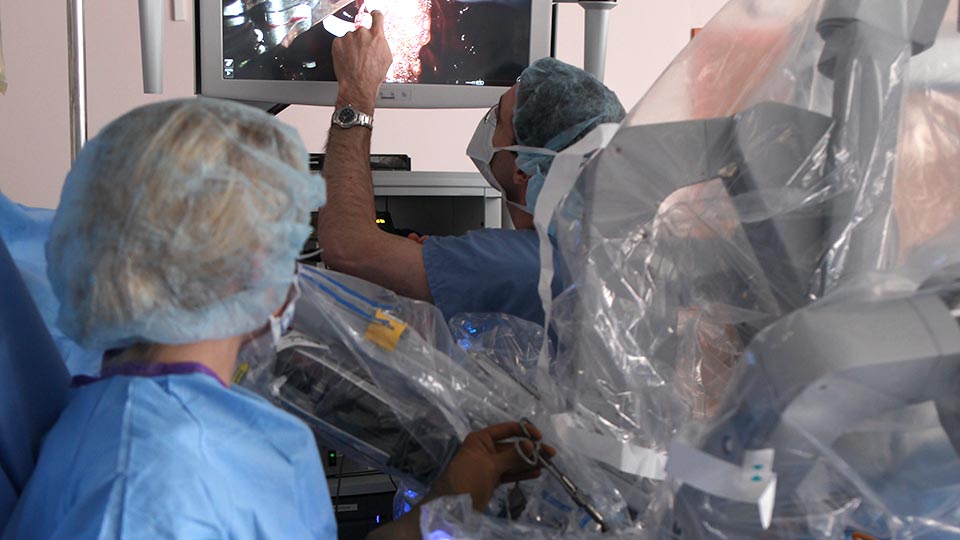Robotic Surgery for Benign Conditions of the Urinary Tract
Doctors at NYU Langone’s Robotic Surgery Center use the latest advances to perform robotic-assisted surgery on the kidneys and urinary tract in people who have benign or cancerous conditions.
Conditions We Manage with Robotic Surgery
We treat people who have certain types of cancer, including kidney cancer, prostate cancer, bladder cancer, ureteral cancer, and adrenal cancer—in collaboration with experts at Perlmutter Cancer Center.
Experts at NYU Langone’s Robotic Surgery Center also manage benign conditions. These include the following:
- benign kidney tumors
- bladder diverticula
- Conn’s syndrome
- Cushing syndrome
- cystocele, or bladder prolapse
- enterocele, or prolapse of the vagina and intestines after hysterectomy
- functional adrenal adenoma
- pelvic organ prolapse, including uterine prolapse
- renal cyst
- retroperitoneal fibrosis
- ureteral stricture
- ureteropelvic junction obstruction
- urinary tract reconstruction following cancer surgery
Our surgeons have pioneered many of the robotic surgical techniques used to manage these conditions, and we have some of the best outcomes in the world. Our research has been commended by the World Congress of Endourology.
Our surgeons have been performing robotic procedures to treat women with urinary incontinence and uterine prolapse for close to a decade, and we’ve taught these techniques to doctors around the world. We perform robotic pelvic organ prolapse repair, a procedure that allows for greater surgical visibility through magnification, which results in more precise movements than with conventional surgical techniques.

NYU Langone’s robotic surgery program has one of the largest number of published articles in robotic pyeloplasty and urinary reconstruction procedures in the world. These treatments involve removing a blockage of the ureteropelvic junction—which is where the kidney meets the ureter, a tube that connects the bladder and kidneys—and using robotic surgery to manage ureteral reconstruction.
Among the strategies we have developed is the use of tissue from inside a patient’s mouth to rebuild the ureter. We have also developed enhanced imaging techniques using near-infrared fluorescence, known as NIRF, to confirm blood flow to the tissue. Our doctors were the first to perform a robotic-assisted ureterolysis, in which the ureter is freed from surrounding fibrous tissue, and a ureterocalicostomy, which is used rarely to treat people with a refractory proximal ureteral stricture or a ureteropelvic junction obstruction.
Leaders in Robotic Surgery Education
In addition to caring for patients and performing research, experts at the Robotic Surgery Center are also committed to training robotic surgeons in new techniques. Each year, more than 100 surgeons come to NYU Langone to observe our advanced robotic urologic techniques.
The Robotic Surgery Center hosts an annual course in robotic surgery across various disciplines. More than 400 attendees from all over the country as well as 11 countries attend the conference each year.
Learn more about our research and educational programs.
Contact Us
Robotic surgery for kidney and urinary conditions is performed by the following doctors:
- Benjamin M. Brucker, MD
- James F. Borin, MD
- Frederick A. Gulmi, MD
- William C. Huang, MD
- Nirit Rosenblum, MD
- Samir Taneja, MD
- James S. Wysock, MD
- Lee C. Zhao, MD
To make an appointment or learn more about our services, call 877-ROBO-NYU (877-762-6698).